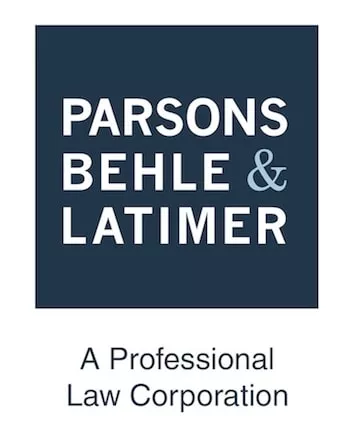On Aug. 12, the U.S. House of Representatives joined the Senate to pass the Inflation Reduction Act of 2022, also referred to as the Climate, Tax, and Health Care Package (IRA). Among other items, the IRA includes tax incentives to promote U.S. production of electric vehicles, renewable energy technologies and critical minerals as well as fees and other incentives designed to mitigate methane emissions, which will be of critical importance to the natural resources industry. It is anticipated President Biden will sign the bill early this week.
This alert reviews the provisions of the IRA designed to incentivize critical mineral production and new excise taxes and penalties associated with methane and oil and gas production. A list of critical minerals is provided here.
New Critical Mineral Sourcing Requirements for Clean Vehicle Credit
Section 13401 of the IRA extensively modifies the existing New Qualified Plug-In Electric Drive Motor Vehicles credit (renamed the "clean vehicle credit") in Section 30D. This section now provides for a maximum federal income tax credit of $7,500 for the purchase of a new electric vehicle depending on the source of critical minerals and components used in the vehicle's battery for which final assembly occurs in North America. The IRA enhances the credit by, among other things, increasing the baseline dollar limit of the credit, expanding the definition of eligible vehicles, allowing a taxpayer to transfer the credit to a registered dealer in exchange for payment from that dealer and eliminating the limit on the number of credit-eligible vehicles.
To initially qualify for the credit, at least 40% of the value of the critical minerals used in the vehicle's battery must be "extracted or processed in the United States, or in any country with which the United States has a free trade agreement in effect" or be "recycled in North America." That percentage threshold increases incrementally to 80% by 2027. If a vehicle does not meet this requirement, the credit is reduced by half to $3,750. An additional tax credit of $3,750 is available if at least 50% of the battery's components are manufactured or assembled in North America. The percentage threshold increases gradually to 100% by 2029.
After 2024, the IRA also makes vehicles ineligible for the credit if the vehicle battery contains any critical minerals or components extracted, processed, recycled, manufactured or assembled by "foreign entities of concern" as defined by the Infrastructure Investment and Jobs Act, (42 USC. § 18741(a)(5). A foreign entity of concern includes, among other things, any foreign entity that is "owned by, controlled by, or subject to the jurisdiction or direction of a government of a foreign country that is a covered nation." Currently, these nations include China, Russia, Iran and North Korea.
Under the IRA, the Department of Treasury is required to issue proposed guidance by Dec. 31, 2022, specifying the record keeping requirements to track the use and integration of critical minerals.
Advanced Manufacturing Production Tax Credit
Section 13502 of the IRA establishes a new Advanced Manufacturing Production Tax Credit (to be codified at Section 45X of the Internal Revenue Code). This federal income tax credit applies to eligible components that are produced by the taxpayer within the United States and sold by the taxpayer. For critical minerals, the credit would be equivalent to 10% of the "costs incurred by the taxpayer with respect to production of such mineral." An eligible component is defined to include "any applicable critical mineral" suggesting that the production of critical minerals in the U.S. may qualify for the credit.
The credit would also apply to certain products such as solar energy components, wind energy components, power inverters and battery components. Though the credit for these products would begin to phase out in 2030 and go away completely in 2033, the credit for the production of critical minerals would not phase out. The credit begins in 2023.
Methane Emissions Fees
Section 60113 of the IRA creates a Methane Emissions Reduction Program designed to reduce methane emissions from the production and distribution of oil and natural gas. The program provides for funding and imposes fees with the intention of improving the monitoring and mitigation of methane leaks.
Fees comprise a significant part of the program. For applicable facilities (oil and gas production, processing, storage, transmission and gathering facilities that emit more than 25,000 metric tons of carbon dioxide annually), a fee will be charged for each ton of methane emitted above a specified annual amount. The annual threshold amounts are:
1. For petroleum and natural gas production facilities, either (a.) 0.2% of the natural gas sent to sale from the facility or (b.) 10 metric tons of methane per million barrels of oil sent to sale from the facility, if such facility sent no natural gas to sale;
2. For nonproduction petroleum and natural gas systems, 0.05% of the natural gas sent to sale from or through the facility; or
3. For natural gas transmission facilities, 0.11% of the natural gas sent to sale from or through the facility.
The fees would be imposed and collected beginning in 2024 at a set rate of $900 per ton. The rate would increase to $1,200 in 2025, to $1,500 by 2026 and remain at that level every year thereafter.
In calculating the total emissions charge obligation for facilities under common control, the IRA will allow for the netting of emissions by reducing the total obligation to account for facility emissions levels that are below the applicable thresholds within and across all applicable segments.
Reinstatement of Superfund
Section 13601 of the IRA reinstates the hazardous substance Superfund financing rate on crude oil and imported petroleum products at the rate of 16.4 cents per gallon and indexes the rate for inflation.
These are only some of the tax incentives and fees that may result from passage of the bill. Individuals and businesses alike should consult with a legal professional to discuss how they may be impacted by these and other provisions of the IRA.
The content of this article is intended to provide a general guide to the subject matter. Specialist advice should be sought about your specific circumstances.


